Kathrine Switzer still rewriting Boston Marathon history 50 years later
Kathrine Switzer knows history. Or so she thought.
Opting to extend an annual stay in New Zealand — her husband’s homeland — to more than two years due to COVID-19 restrictions, Switzer tore into a shelf of “someday” books. As in someday, I’ll read those.
One of her most interesting reads involved the 19th-century connection between Elizabeth Cady Stanton and Susan B. Anthony, pioneers of women’s rights: "Not For Ourselves Alone."
Their fight involved fierce opposition and took up much of their adult lives.
“They worked for fifty years,” Switzer said in amazement. “It is unfathomable to even think about.”
The simple act of casting a vote was not an option for women until 1920, more than a decade after Stanton and Anthony died. The simple act of a woman running a marathon also involved a prolonged — albeit shorter — battle.
That they weren’t officially recognized to run the Boston version until 1972 may seem unfathomable to the current generation.
“We don’t know that history because we’re losing it,” Switzer said. “That’s why it’s important to capture these stories and to pass them on.”
More on Kathrine Switzer: How the worst moment of her life revolutionized women’s running
Switzer has spent much of the past year in capture mode, compiling 600-word biographies on the seven other women who toed the Boston Marathon starting line in 1972, when they were first officially recognized.
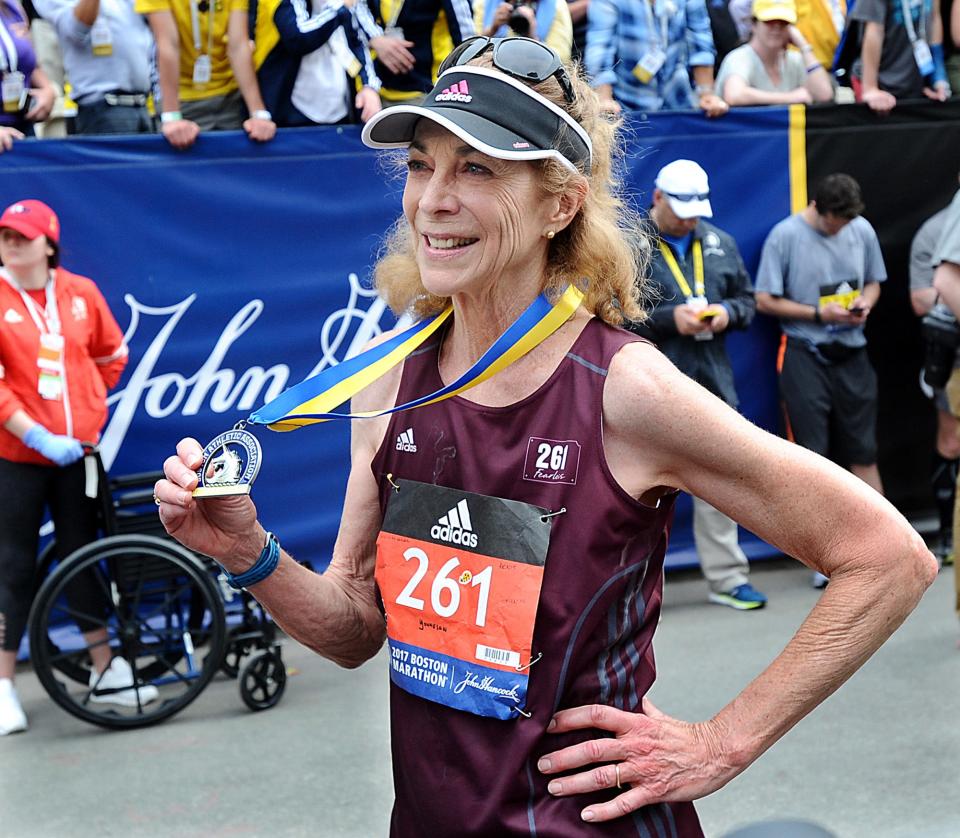
After returning to upstate New York in late March after a 30-month stay in New Zealand, Switzer, 75, recounted her own story in a lengthy phone interview with the Daily News, including the two revolutions — and two iconic photos — she was a part of.
Six hundred words will not suffice.
'Long way to go'
In 1966, Cambridge-born Bobbi Gibb hid in the bushes in Hopkinton, tucked her pony tail under a hoodie and jumped into the Boston Marathon after the first pack of runners had departed. She was greeted warmly by fellow runners — all men — and the press.
Switzer showed up the following year with a bib number: 261, later to become iconic digits. Her treatment wasn’t so kind.
What to know: A spectator's guide to the 2022 Boston Marathon
The most life-altering broken tackle did not happen on a football field, but along Route 135 in Hopkinton, where race official Jock Semple attempted to forcibly remove Switzer from the road.
The images that captured the failed takedown “gave the Women’s Rights Movement one of the greatest photographs in history,” Switzer said.
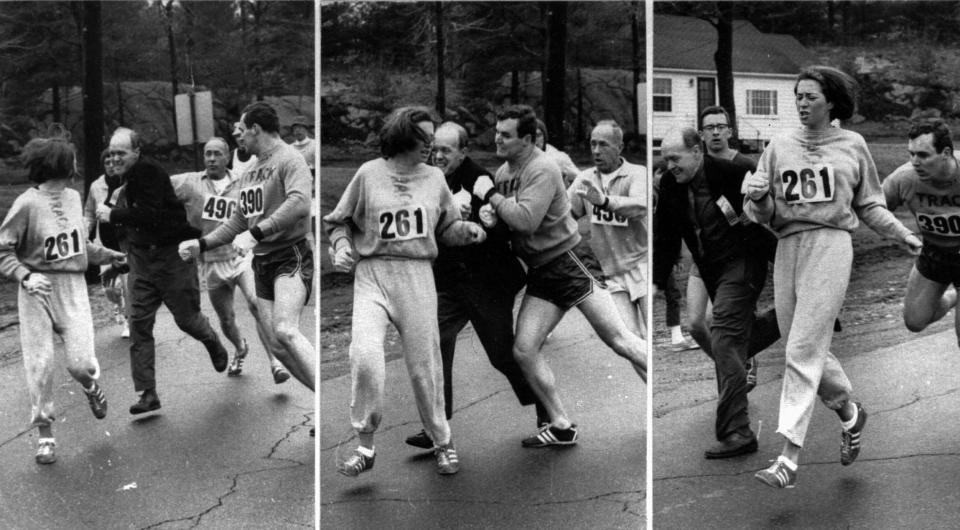
Five years later — after more wrangling with Semple — Switzer and six other women appeared in another historic photo. The shot reveals the playful smiles of Nina Kuscsik, Elaine Pedersen, Ginny Collins, Pat Barrett, Frances Morrison, Sara Mae Berman and Switzer.
Their playful look before the ‘72 Marathon was the result of a comedic back-and-forth with the photographer. A male. A non-runner.
“He wanted us to line up and do like a 'Can-Can' dance,” Switzer recalled. “And we said, ‘We’re getting ready to start a marathon here.’”
He also wanted them to look “feminine and girly” and, later, to pose in a sprinter’s position.
From the archives: Women’s running has transformed in 50 years
“We were laughing because he was so silly,” Switzer said. “It made us all go, ‘(sigh), We’ve got a long way to go yet. He doesn’t really get it. But at any rate, the picture came out great.”
Valerie Rogosheske also ran that day, but did not make the photo shoot. The Minnesota native was well aware of the work that Kuscsik, Berman and Switzer had put in to allow female participation.
“They had been lobbying for so long to get the race legal and I feel like I just showed up,” Rogosheske said. “But now I’ve been embracing that ‘show up’ thing. Even people who show up can contribute a lot and we need everybody.”
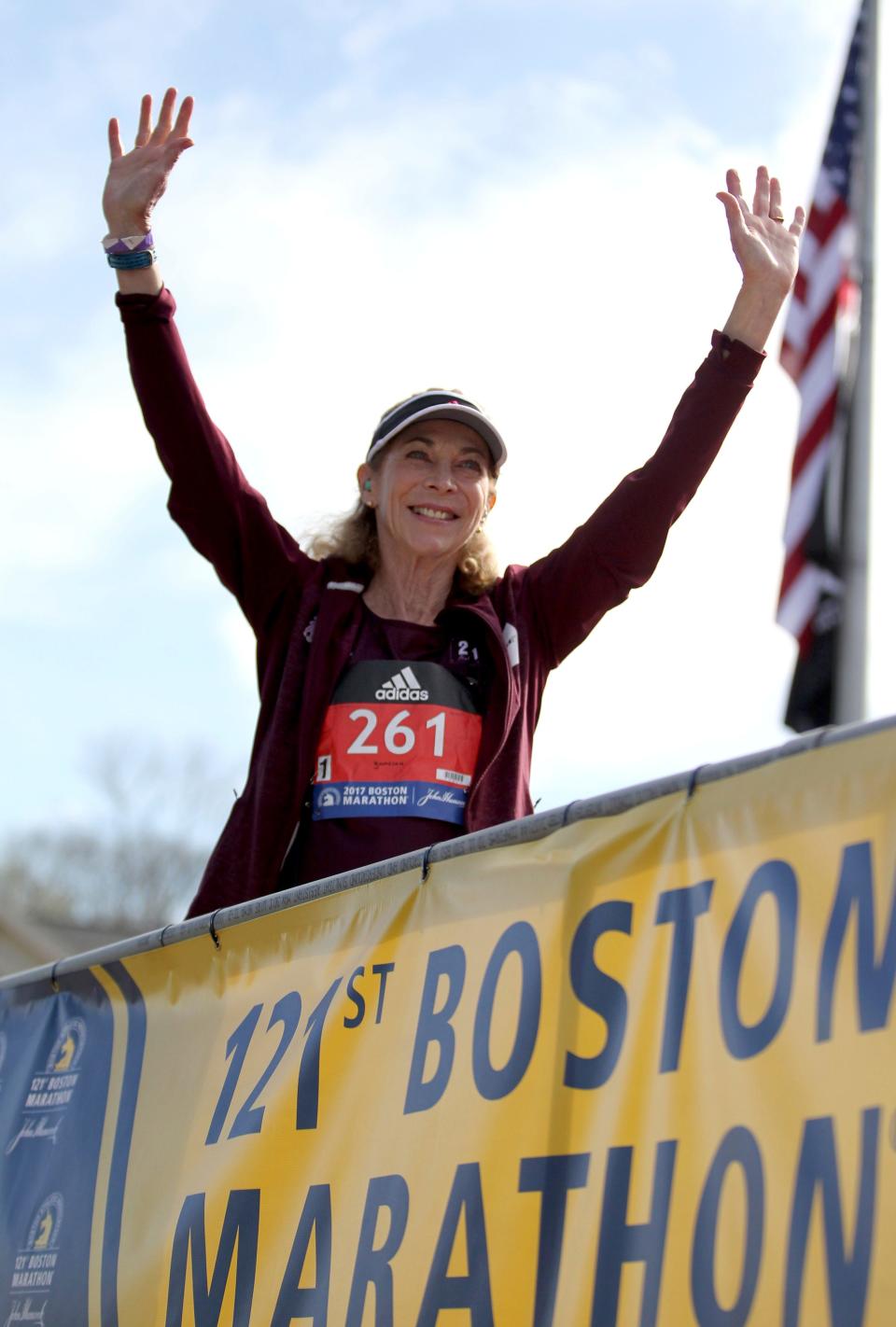
Switzer’s recent work on biographical documentation for the “Original 8” has yielded both joy and frustration. While Berman became a marathon world record holder and Kuscsik was inducted into the National Distance Running Hall of Fame, Switzer has not discovered what became of Collins and Morrison.
“We never heard from them again. I have done such a search and spent months looking for those two names,” Switzer said. “I’ve had professional people out on internet searches looking for them. I have read so many obituaries, I could just scream.”
Her tireless, decades-long work has not gone unnoticed.
"I have read so many stories of her and she is a hero for all women runners," said Jocelyn Rivas, the youngest woman, at 24, to complete 100 marathons. "She changed the running world into a better world for all the women who came after her."
Numbers not to be feared
The bib number that Semple attempted to remove from Switzer remains pinned into history.
261.
“I thought of that number only as three digits,” she said.
But nearly a decade ago, Switzer received letters, emails and photographs from women who wrote they were running with the number for their next race. Messages came from, among other outposts, Paraguay, Poland, Japan and Russia.
“People related to the picture of Jock trying to throw me out of the race, because everybody at one time or another, has been told that they don’t belong or they’re not good enough or you’re the wrong color or the wrong religion.”
Photos of women with “261” tattoos also found their way to Switzer.
2022 marathon news: B.A.A. bans Russians, Belarusians currently living in those countries from Boston Marathon
“The letters were almost always the same. They would say ‘running has changed my life and it makes me feel fearless.’
“It all came in like a deluge.”
Her friends encouraged Switzer to run with the 261 legacy, but she balked.
“I’m too old for another revolution,” she protested.
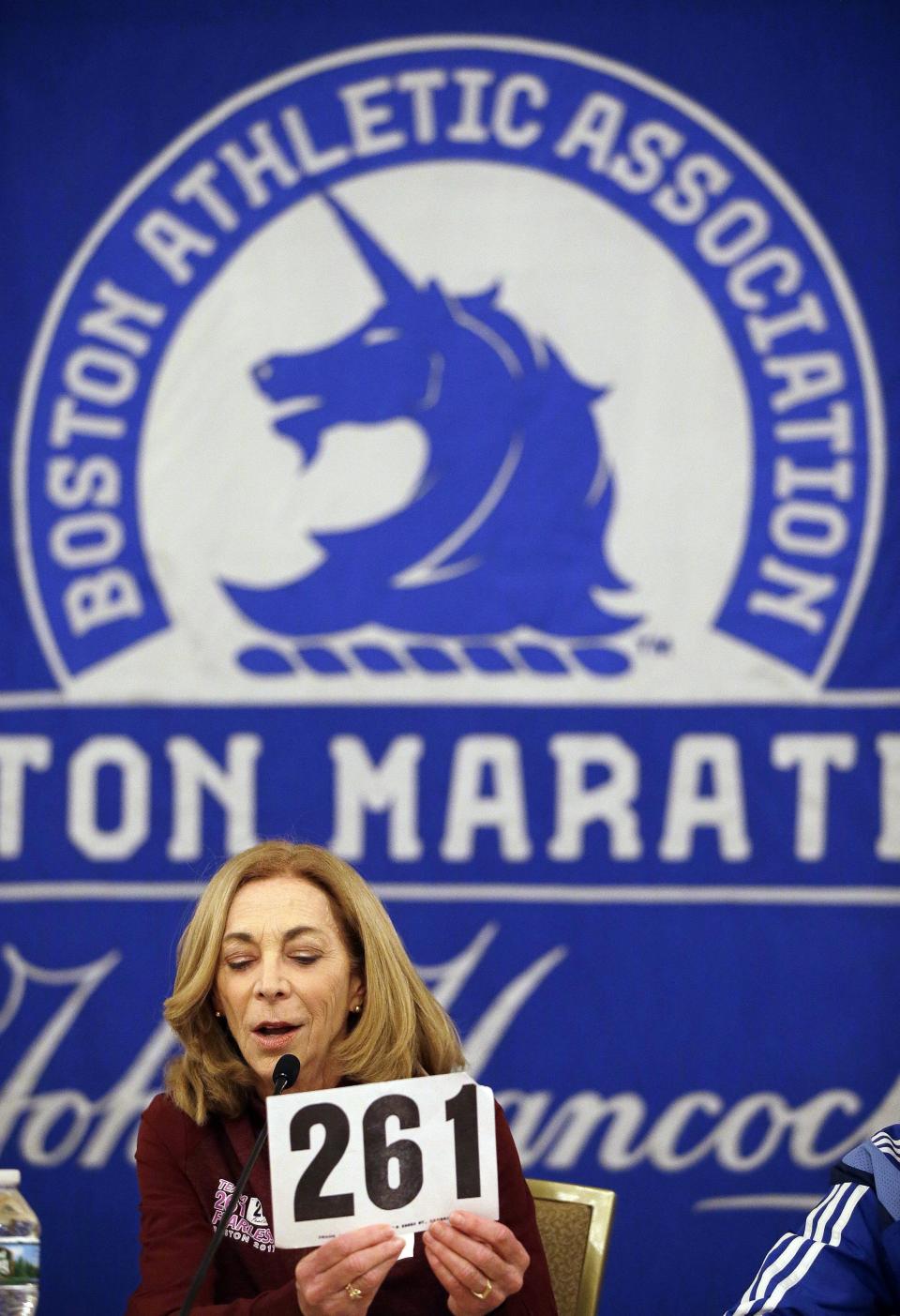
But in 2015, along with Edith Zuschmann, the nonprofit 261 Fearless left the starting line and continues to “offer women’s education and women’s running opportunities for women to discover their self-worth and potential and make choices to control their lives,” according to its website.
261 Fearless Inc. is currently available in 12 countries and five continents with its availability to training and coaching.
Women still fighting inequality
The fields at many major marathons — including Boston’s — are nearly split 50-50 between women and men. Prize money is equal as well. Not so in other sports.
An agreement in February settled an equal-pay lawsuit between the US Women’s National Soccer Team and US Soccer. But it came after the sides wagered a six-year battle over disparate pay.
'They've had 50 years to figure it out': Title IX disparities in major college sports haven’t gone away
Inadequate facilities, not pay, have been a sore subject the past three years at the NCAA Division 1 women’s basketball tournament. Additionally, women’s tennis fought pay discrepancies before Billie Jean King “fought and fought and fought for that,” said Switzer, “and boy she took a lot of grief.”
“When (the US women’s soccer team) gets the money they deserve, people will start paying attention,” Switzer said. “Sponsors will come on board and it will get on television. You can’t watch it if it’s not on TV! It’s a chicken-or-egg situation.”
Switzer did her part in bringing women’s running to the world. In 1977, she created the Avon International Running Circuit, which included more than 1 million women participants in 400 races.
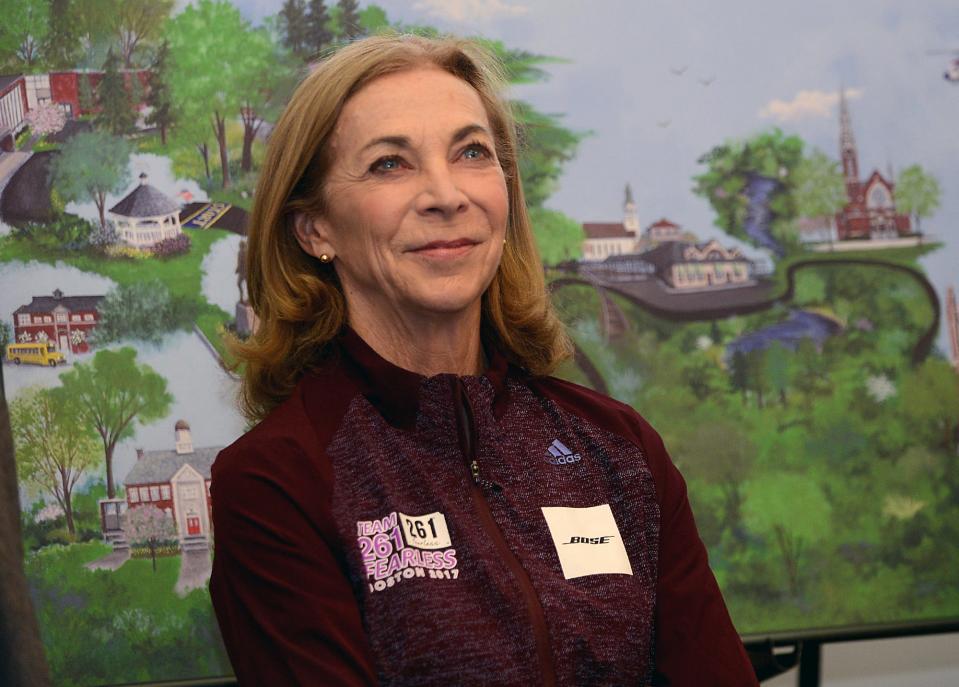
A 1980 Avon marathon in London closed that city’s streets for the first time for a sporting event, according to Switzer, and “became a design model for the London Marathon,” she said.
Because the Avon circuit reached into 27 countries and five continents, it exceeded the Olympic requirement for international representation — a precursor to yet another transformative event: Joan Benoit’s triumphant run into LA Memorial Stadium in 1984.
Her win in the Olympic women’s marathon debut represented “an iconic moment in sports,” said Switzer, who likened the journey to the result of what Elizabeth Cady Stanton and Susan B. Anthony fought so hard for.
“To me,” Switzer said, “it was as important as giving women the right to vote.”
Follow Tim Dumas on Twitter: @TimDumas.
This article originally appeared on MetroWest Daily News: Boston Marathon biography of 'Original 8' women runners in the works

 money
money 